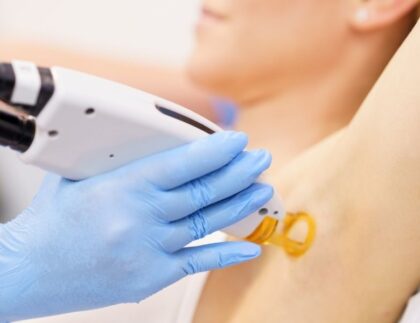1. You need to wait until after your mastectomy before having breast reconstruction
This is not true. In fact, with most cases, the breast reconstruction can be completed at the same time the mastectomy is completed. This can lead to the best overall results cosmetically. The best candidates for this type of procedure are the ones that have early stage cancer. Natural breast skin is saved and the amount of scarring can also be reduced. Psychologically, the patient may also feel better having avoided the experience of waking up with a flat chest. They also only have to recover from one procedure versus having to heal from a second one.
2. Breast reconstruction is not an option if a woman has had radiation
Whether a patient is having radiation, or has chosen another treatment option, breast reconstruction is always available. However, the type of reconstruction may be slightly different. Doctors may recommend a reconstruction using a flap based method versus the more traditional implants. This is due to the higher risk of complications associated with implants in combination with radiation. Full reconstruction with implants can be delayed until after the radiation treatment is completed. Therefore, reconstruction can occur, but it may be slightly delayed based on the treatment.
3. Breast implants are the only option available for reconstruction
While most women automatically think of breast implants when they imagine reconstruction, the reality is that there are multiple options available. One such option is the use of flaps, which take tissue from other areas of the patient’s body and use it to create a more realistic result. Using flaps, one can also avoid the potential of additional surgery later, as implants tend to harden over time and require replacement.
4. Breast reconstruction with implants can increase the chance of breast cancer reoccurring
Implants have been shown to not increase the occurrence or recurrence of breast cancer. Research has also been done to make sure that through imaging, mammography and scans, one can still be screened for cancer despite implants. Therefore, the implants do not limit a doctor’s ability to continually check for any recurring cancer. In fact, they can normally locate any issues effectively.
5. Breast reconstruction does not impact a woman’s overall happiness
Cancer and the treatments involved can be very damaging, from both an emotional but also a psychological standpoint. It can feel as if the cancer has taken one of the symbols of their womanhood. Additionally, looking down and not seeing breasts can be a constant reminder of the effects of cancer on the woman’s body. On the other hand, reconstruction can contribute to a woman’s feeling of wellness, giving them a feeling of being whole again and restoring their feeling of femininity, thus having a positive psychological impact on the patient.
6. Breast reconstruction can only occur immediately after a mastectomy
The reality is that there is no right time for reconstruction to occur. Depending on the patient and their doctor, the reconstruction can occur right away, or it can be delayed until the patient feels ready. It is possible for reconstruction to be completed months or even years after a mastectomy. However, patients can opt for reconstruction at any time, based on their treatment plan and personal feelings about even wanting to have any type of reconstruction.
7. Women over 50 are too old to be considered for breast reconstruction
Breast reconstruction can be important to the wellbeing of a patient, both mentally and emotionally. While an older patient might have a longer healing time after reconstruction, it is still possible for them to undergo the procedure. It can have a positive impact on the patient’s sexual health and cause an overall increase in their quality of life as a result.
8. Reconstructed breasts don’t look natural
Due to many of the advancements in plastic surgery and the materials being used, it is possible to get a more natural feel and appearance through breast reconstruction. Working with your doctor, you can determine the type of reconstruction you want based on the effect that you want to achieve. The outcome can often meet or exceed the patient’s expectations.
9. Breast reconstruction is not for those who have undergone chemotherapy
While chemotherapy may need to be taken into account when determining the timing for reconstruction surgery, it does not take reconstruction off the table for these patients. A temporary implant or expander may be placed following a mastectomy, then the patient can undergo their chemotherapy treatment after the tissue has healed for the appropriate amount of time. Afterward, they can have more complete breast reconstruction surgery.
10. Smaller breasts can put you at a lower risk for breast cancer
While it might seem that breast cancer is more likely to occur in larger breasts, the reality is that breast size has no impact on your cancer risk. Regardless of your breast size, it is important to have regular checkups and exams to detect any potential cancer risk early. If you have had reconstruction surgery, you can still have the appropriate checks for cancer, while enjoying an increased breast size,
As you can see, reconstruction can bring many benefits to the patient, as well as being possible for a large variety of candidates. For those who have had cancer, reconstruction surgery can be a way to reclaim the body image and sense of self that the cancer may have taken away. As part of a long term recovery, breast reconstruction is a viable option for cancer patients.









